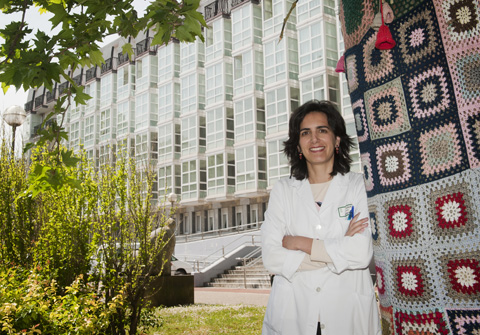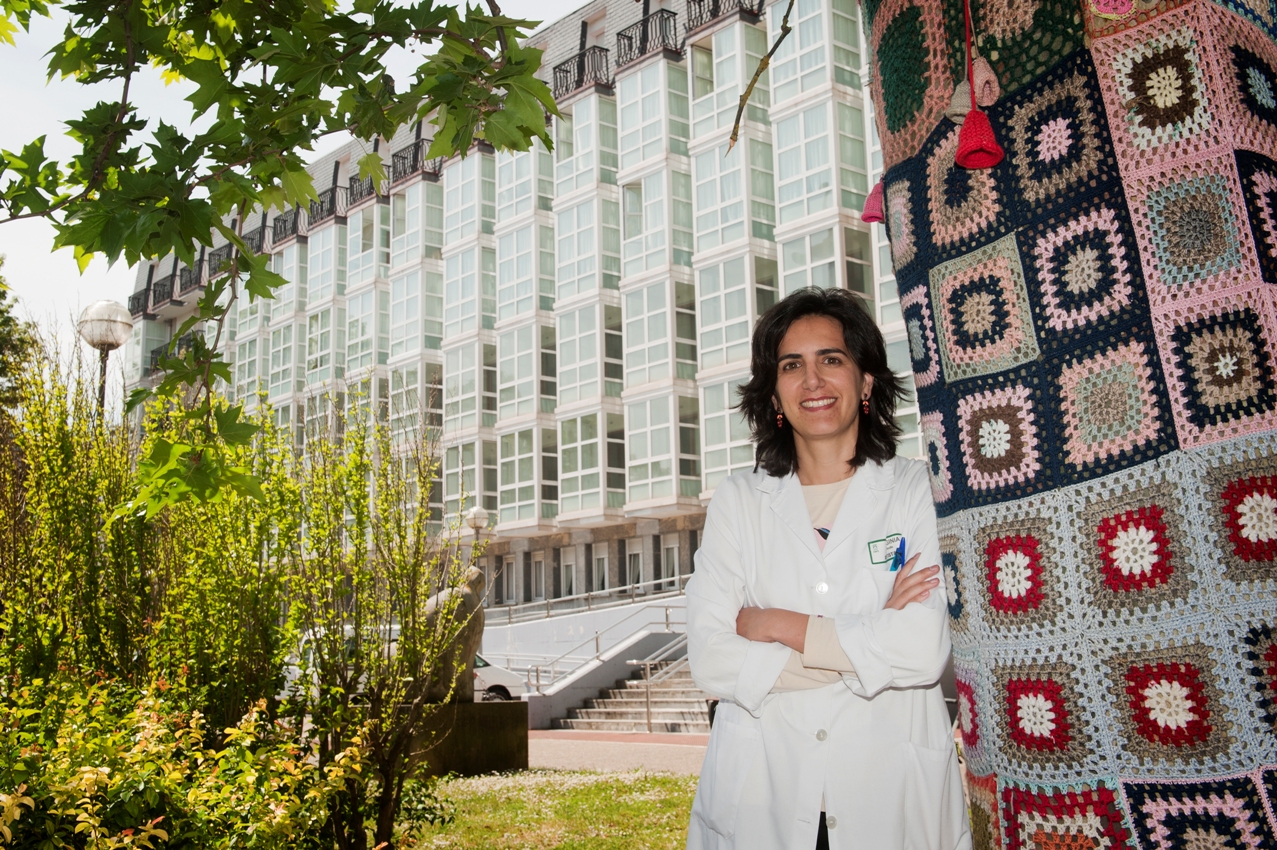The main aim of the research by Virginia Andía-Muñoz was to analyse the nutritional status and perceived health, diet, dependence and cognitive capacity of various groups of elderly people in the city of Vitoria-Gasteiz. The work has revealed the degree of malnutrition and eating habits of the elderly. It will enable the quality of nutritional care to be personalised and improved through multidisciplinary intervention in which not only the medical team needs to be present but also kitchen staff and dieticians.
Ongoing monitoring would prevent the risk of malnutrition in elderly people
A thesis of the UPV/EHU-University of the Basque Country has analysed the eating habits and health of this group at a comprehensive care centre
First publication date: 05/05/2017

The nutritional care of elderly people is very complex. It is a highly heterogeneous population group in which there are no specific protocols for action that clearly define the procedure in nutritional care. What is more, they display a high prevalence of malnutrition and their care quality depends largely on the resources available in the care centres. The thesis written up by Virginia-Andía Muñoz, ‘Estudio de salud percibida y análisis del riesgo de desnutrición en un centro de atención integral de ancianos' (‘Study of perceived health and analysis of malnutrition risk at a comprehensive care centre for the elderly'), analysed the nutritional status, perceived health, dependence, cognitive status and diet of elderly people in residential care at the Residencia San Prudencio in Vitoria-Gasteiz as well as of other elderly people outside the centre but who depend on it for their meals: Centro de día San Prudencio (day-care centre), canteens run by the Centros Socioculturales de mayores (sociocultural centres for the elderly) and the Servicio de Comida a Domicilio ("Meals on Wheels" service).
The nutritional recommendations geared towards the elderly have not been updated very much and adapted to their eating habits, and neither is there a single reference method to assess nutritional status or to assess the effectiveness of the actions. "It is essential to find out what the nutritional status of this population group is like, as that would allow malnutrition statuses to be prevented and/or diagnosed. Likewise, it is essential to know the diseases in which malnutrition is a risk factor, find out the risk in the event of adverse clinical situations, and consider the impact of malnutrition on the general state of health, functional capacity and life quality," asserted the new PhD holder. In this respect, one of the conclusions in her work confirms that the methods based on the use of standing height and the knee-malleolus length are the most accurate in anthropometric assessment, with their selection being recommended as part of the suite of tools for assessing nutritional status in the elderly.
According to her research, the residential sphere contributes positively towards the physical well-being and quality of life of the elderly, while those who receive partial care, from the socio-health and food perspective, are not excluded from displaying an inadequate nutritional status. "Users of the Residencia must receive ongoing socio-health and nutritional monitoring that will allow the factors involved in their level of dependence and malnutrition or risk of malnutrition to be spotted and treated. With respect to the users of the Centro de día (day-care centre), they would need to receive comprehensive nutritional care from the moment they are admitted to the centre so that they receive dietary advice to improve the food they have when they are in their own homes. For its part, the Servicio de comida a domicilio ("Meals-on-Wheels" service) does not cover the nutritional needs of the elderly, so a more specific socio-health and nutritional intervention would be needed for this group," she explained.
Future actions
Virginia Andía's thesis concludes with a series of recommendations that could be applied not only at the centre that is the focus of the study, they could also be extrapolated to any institution offering services of this type:
- The various anthropometric methods should go on being applied so that a valid, accurate method can be established.
- A protocol should be established to assess the nutritional status which involves an anthropometric, metabolic model completed with the MNA-SF scale and the record of dietary information so that it could be applied to all the users as soon as they are admitted, and subsequently on a yearly basis. This would allow a nutritional monitoring of the users to be made and provide information that would allow a profile of the nutritional evolution of the elderly people to be established; it could be extrapolated to the rest of the elderly population in residential care homes and day-care centres.
- A procedure for nutritional intervention should be established among the people in charge of the centres using the meals service in order to detect and prevent situations of nutritional risk.
- There needs to be an assessment of the nutritional quality of the diet (theoretical nutrient input, physico-chemical and microbiological analysis, viscosity and texture) offered to the elderly in residential care and who need an adapted diet, and dietary strategies for improving the diet need to be established, while also bearing in mind the availability of the material and human resources needed for this purpose.
Additional information
Virginia Andía has a diploma in Human Nutrition and Dietetics from the University of Navarre and a degree in Food Science and Technology from the UPV/EHU. She has also done a Master's in Food Quality and Safety at the UPV/EHU. Since 2006 she has been working as a dietician at the Centro Integral de Atención a Mayores ‘San Prudencio' (comprehensive care centre for the elderly) run by Vitoria-Gasteiz City Council.
Her thesis supervisors were Luis Carlos Abecia-Inchaurregui and Enrique Echevarría-Orella in the UPV/EHU's Department of Pharmacy and Food Sciences.



